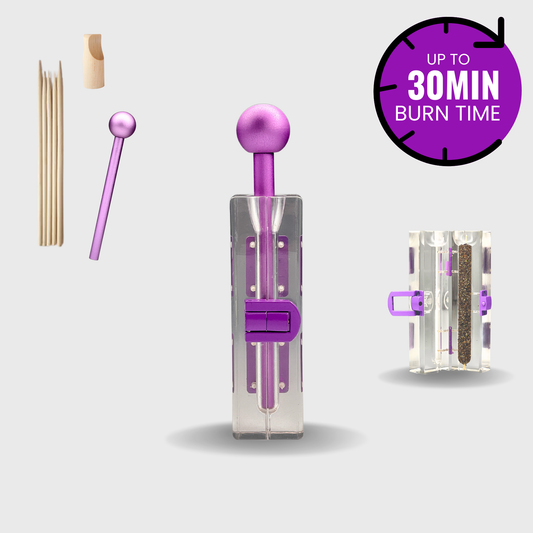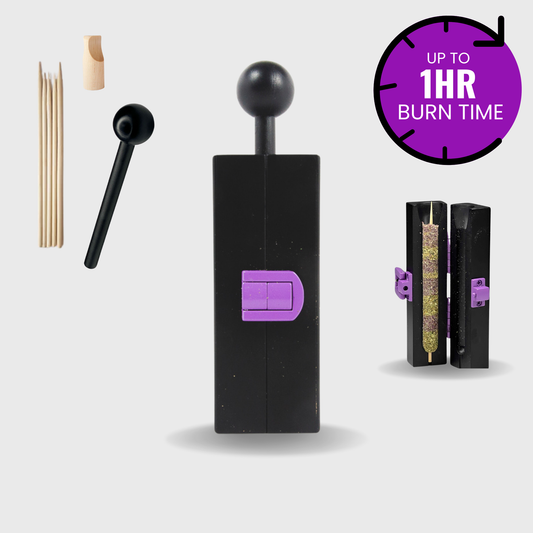⬇️ Prefer to listen instead? ⬇️
- Cannabis use in Canada increased by just 0.35% per year following legalization.
- Cannabis misuse declined significantly among frequent users, dropping below diagnostic thresholds.
- Younger users are aging out of problematic cannabis use, reducing misuse rates overall.
- More consumers are turning to edibles and vapes over traditional cannabis flower.
- Legalization is linked with better-informed choices, not widespread abuse.
Since cannabis legalization in Canada back in 2018, debate has raged about whether more accessible weed would lead to a spike in marijuana use and misuse. But new research over time shows a more complicated, but hopeful, situation. While cannabis use has modestly increased, cannabis misuse has actually dropped, especially among previous frequent users. This changing situation reflects more intentional behaviors, safer practices, and less shame—pointing to a big change in how people use cannabis responsibly.
Legalization vs. Misuse: What the Data Tells Us
Following legalization, concerns swirled about potential cannabis misuse becoming a public health crisis. But a recent study published in JAMA Network Open challenges that assumption. It looked at data from more than 1,400 Canadian adults over a five-year period. This data shows how behaviors changed from before legalization (2018) through the years after legalization (up to early 2023).
And then, key findings include:
- Cannabis use frequency rose by an average of 0.35 percentage points per year.
- Cannabis misuse, tracked using the Cannabis Use Disorder Identification Test - Revised (CUDIT-R), declined overall, especially around the onset of the COVID-19 pandemic (American Medical Association, 2024).
It's a good finding: growing access to legal cannabis hasn’t led to a big jump in problem use—in fact, it may be having the opposite effect. Moderation and mindfulness now appear to be influencing user behavior more than ever before.

Who’s Smoking More (And Who Isn't)?
Legal cannabis didn’t cause everyone to start using it a lot. Instead, it slightly changed who uses cannabis and how often. The study put users into different groups based on how often they used it and tracked how behaviors shifted over time.
Daily Users: A Surprising Decline
First, those who used cannabis daily before legalization showed the most noticeable decrease in frequency. It shows something interesting: legalization may be making people think about using less among long-time consumers.
Why the shift from smoking a lot?
- Less shame means less need to use it secretly and a lot.
- Better-regulated products offer more consistent dosing, reducing the need to “chase” effects.
- Legalization may give users more information, helping them make planned changes for health or lifestyle reasons.
Occasional Users: Slight Uptick
Also, casual users—those who consumed cannabis once a month or less—showed minor increases in usage across the study period. That’s not surprising. Legalization tends to make behaviors seem normal, and it's natural for some people to be curious and try it in that situation.
However, it's important to note that this increase was modest, showing again that legalization didn't cause a lot of abuse, even among newer users.
Non-Users: Testing the Waters
Legalization didn’t make huge numbers of people who didn't use it into regular users. Former non-users who decided to try cannabis after it became legal did so at low frequencies—and with generally low risk.
Cannabis becoming legal meant:
- Fewer legal and social obstacles to trying it out.
- More guidance on how to start small—through dispensaries, labeling, and cultural dialogue.
- Less misinformation leading to using it carelessly.
And then, taken together, these shifts represent a situation that's settling down where cannabis consumption is something people choose—not something they do to rebel.

What Is Cannabis Misuse—And Why Is It Declining?
Misuse refers not just to how often someone uses cannabis, but to how it affects their daily life, habits, responsibilities, and mental health. The study tracked misuse using the CUDIT-R scale—a validated 8-item tool that checks for risky ways of using it.
A score of 6 or higher typically can mean potential cannabis use disorder (CUD). Remarkably, for some of the highest-risk groups, these scores fell below that threshold after legalization.
Frequent Weekly Users Show Most Improvement
The subgroup most likely to have cannabis misuse—those who used weekly before legalization—showed the most big drops in average CUDIT-R score.
➡️ “From above to below the validated CUDIT-R cutoff score of 6”
(American Medical Association, 2024)
This shows that legalization, access to licensed cannabis products, improved education, and reduced stigma may be pushing people toward using it in healthier ways.
Possible Reasons for the Decrease
So what’s behind the drop in problematic cannabis use?
- Better product selection: Consumers can choose low-THC or balanced THC/CBD options.
- Access to reputable information through dispensaries and public education.
- Use becoming normal reduces using a lot at once, which may have happened because it was hard to get or because of shame before legalization.
- Improved support systems for people looking to control or cut back how much they use.
Furthermore, as cannabis misuse falls even among frequent users, fears around abuse as a side effect of legalization appear more and more wrong.

Youth and Cannabis Misuse: Myths vs. Facts
One of the things critics of cannabis legalization keep saying is the idea that it will increase teen use and misuse.
Yet many recent studies—including federal surveys—show the opposite.
- In states with legal cannabis, teenage use has actually declined since dispensaries opened legally.
- Young people aged 12–20 have reported reduced annual marijuana use, per the 2023 SAMHSA.
- According to a study by Michigan State University, legal sales are not linked to starting early in underage populations.
Also, one important reason? Legal rules require checking age when buying it—something black markets never did.
Additionally, the so-called “forbidden fruit” effect may be lessening. With fewer taboos and more fact-based education, today’s youth are:
- Delaying first use
- Starting with lower-risk formats
- Using cannabis more cautiously
Not Just Flower: Shifting Product Preferences
Cannabis legalization didn’t just lead to more consumption—it meant people started choosing different types of products.
The Rise of Vaporizers and Edibles
Between 2018 and 2023, big changes in how people consumed cannabis emerged:
- Use of dried flower, oils, tinctures, topicals, and concentrates declined.
- Meanwhile, vapes and edibles gained popularity, especially disposable vape pens.
Disposable vapes alone jumped from 18.4% to 33% user rate, increasing by 3.39% each year (American Medical Association, 2024).
And then, these trends mean things for health:
- Edibles and vapes reduce exposure to combustion, which lowers respiratory risks.
- Non-smoking formats allow more exact doses, helping with responsible use.
- The wide product variety helps users make their experience fit them without using too much.
Public Health Outcomes: The Complex Truth
From a public health perspective, the shift in user behavior after legalization appears cautiously hopeful.
Marijuana Use Trends Are Modest
The use increase—just 0.35% annually—is so minor that researchers consider it statistically insignificant.
But notably, it’s not how much more people are using it, but how well they are using it that matters most:
- Fewer signs of dependency
- Better control over doses
- Wider access to formats that are better for health
Misuse Decline Is Significant
And then, reductions in cannabis misuse are statistically meaningful—especially among the higher-risk individuals.
These two facts together show that the idea “more users = more harm” is wrong and suggest something better: people are using cannabis more responsibly, and legalization may be helping.

Culture Shift: From High to Intentional
Legalization didn’t turn every consumer into a heavy smoker—it helped create a more intentional cannabis culture.
Brands Like Purple Rose Supply Help Shape That Shift
And then, Purple Rose Supply stands out by focusing on:
- Slow-burning products: Their CannaMold triples burn time for longer sessions with less repacking.
- Precision portions: Tailor your dosage—no overdoing it.
- A ritual experience: Encourages thoughtful, social, and clean use.
And then, by giving users better tools and education, brands like Purple Rose move us toward a culture based on being healthy, not using too much.
Personal Control and Group Sharing—Seen in a New Way
Old-school blunt circles and spontaneous bong rips still exist, but users increasingly choose experiences that are more personal and thought out.
And then, with tools like Purple Rose’s custom molds:
- Avoid mouth-to-mouth transfer for better hygiene
- Deliver consistent doses every time
- Create intentional, relaxing rituals—even in group settings
This change shows that cannabis can be both personal therapy and shared connection—without being unsafe.

What Comes Next? The Future of Legal Cannabis Culture
Looking past 2024, expect to see the cannabis culture settle down further:
Upcoming Trends:
- Widespread use of microdosing
- Luxury-grade accessories and gear
- Precision products with detailed cannabinoid profiles
- Consumer demand for natural, sustainable product lines
And then, as awareness of cannabis misuse risks becomes clearer, future trends will definitely be about smarter use—not more of it.
Final Thoughts: Legalization Is Just the Beginning
Cannabis legalization hasn’t caused a lot of chaos with weed. Instead, it made it possible to use cannabis in an informed, empowered, and mindful way. With better tools, better access, and better education, users are proving that marijuana use doesn’t equal misuse.
And then, that’s the base for a healthier lifestyle where people make intentional choices—helped by new ideas and guided by facts. Furthermore, through brands like Purple Rose Supply, cannabis culture is settling into something more organized, more conscious, and more connected.
So go ahead—light it, enjoy it, but do it smarter.
Citations
- American Medical Association. (2024). Changes in Frequency of Cannabis Use and Misuse Following Legalization in Canada. JAMA Network Open. https://jamanetwork.com/journals/jamanetworkopen/fullarticle/2833180
- Centers for Disease Control and Prevention. (2022). National Survey on Drug Use and Health. https://www.marijuanamoment.net/teen-marijuana-use-has-been-declining-since-legal-dispensaries-started-opening-federal-cdc-study-shows/
- Substance Abuse and Mental Health Services Administration. (2023). National Survey on Drug Use and Health. https://www.marijuanamoment.net/teen-marijuana-use-is-lower-now-than-before-states-started-legalizing-it-for-adults-federal-report-shows/
- Michigan State University. (2022). PLOS One Study on Legal Retail Sales and Cannabis Onset. https://www.marijuanamoment.net/new-study-says-legalization-hasnt-caused-more-teens-to-try-cannabis/




